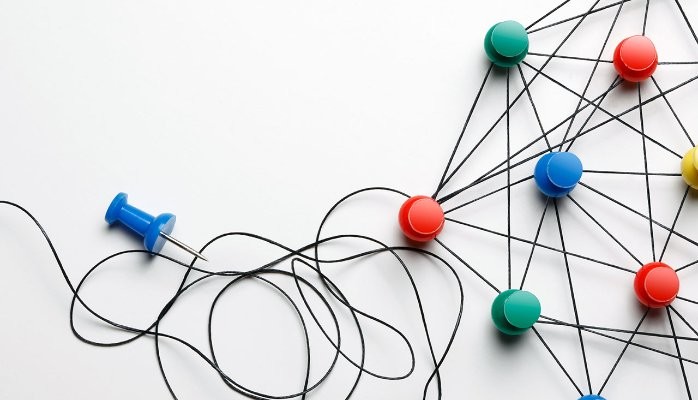Harnessing the full potential of healthcare data is more than just collecting figures and facts; it hinges on the smooth sharing of this data across diverse systems, platforms, and devices. Without this crucial seamless flow, termed as data interoperability, the colossal data reservoirs become stagnant and underutilized.
Let's dive deeper and uncover the imperative nature of healthcare data interoperability, drawing real-world examples and delineating the tiers of its sophistication.
Why Data Interoperability is a Game-Changer in Healthcare?
Amid the dynamic healthcare canvas, data interoperability isn't just an added feature; it's the very backbone that augments the efficiency, efficacy, and safety of medical services. Let's look at some of its multifaceted benefits:
- Elevating Patient Care: The essence of interoperability reflects in improved patient care. A unified data-sharing realm lets physicians access holistic patient profiles, thereby sharpening their diagnostic precision and therapeutic approaches.
- Boosting Efficiency and Cost-Effectiveness: Interoperable systems cut through the administrative red tape and diminish the propensity for repeated tests, translating to both time and financial savings.
- Strengthening Data Security: When crafted adeptly, interoperable frameworks incorporate formidable encryption, safeguarding sensitive data while maintaining its accessibility.
- Catalyzing Research: Seamless data exchange fosters the consolidation of vast datasets, which is instrumental for trailblazing research and innovation in medical strategies.
Painting a Picture: Data Interoperability in Action
Imagine Mark, a diabetic patient, moving to a new city. As he steps into a new physician's clinic, the doctor, leveraging advanced interoperable systems, immediately accesses Mark's comprehensive medical history. This isn't just about convenience. This seamless integration means the doctor gets a holistic view of Mark's health, from medication history to prior complications.
The result? Mark receives tailored care from day one, without the hassle of recollecting past medical events. Furthermore, this reduces the risk of overlooking critical medical details, ensuring that Mark's treatment plan is both accurate and optimal for his condition. This scenario underscores the profound impact of data interoperability on patient care.
Navigating the Four Tiers of Interoperability
Interoperability in healthcare is not a one-size-fits-all concept; it manifests in four distinct tiers, each with its depth and complexity.
- Foundational: At this most basic level, data is exchanged from one system to another but not necessarily interpreted by the receiving system. Foundational interoperability allows one system to read the data, but it doesn't mean the data will be understood.
- Structural: This level ensures that data structures are preserved and unaltered during the transfer. The receiving system can thus interpret the data at the field level, providing a deeper level of understanding than foundational interoperability.
- Semantic: At this level, the systems can both exchange and interpret data in such a way that the precise meaning is preserved and understood by both systems. This is crucial for sensitive healthcare data where misinterpretation can have serious consequences.
- Organizational: This is the highest level of interoperability, incorporating policies, governance, and protocols that govern how data is to be used across different departments, organizations, and jurisdictions.
A Glimpse into Real-World Interoperability
Electronic health records (EHRs) serve as a shining example of the power and promise of data interoperability in modern healthcare. As intricate digital repositories, EHRs integrate a plethora of healthcare elements, ranging from detailed lab results and pharmacy records to intricate billing information. This seamless consolidation creates a cohesive, full-fledged continuum of patient care, providing caregivers with a panoramic view of a patient's health journey.
When a physician prescribes medication or recommends a specific treatment, this directive becomes a part of the EHR, ensuring that every member of the medical team remains informed. Such synchronization not only simplifies administrative procedures like billing but also creates a reservoir of data that can be invaluable for epidemiological studies and broader public health research endeavors. Through such platforms, healthcare turns more collaborative, evidence-based, and geared towards holistic patient welfare.
In Summary
The paradigm of healthcare data interoperability transcends being a mere technical jargon. It's an imperative, striving to cultivate a healthcare ecosystem where data isn't merely hoarded but is judiciously harnessed for collective health betterment. For all healthcare stakeholders, appreciating the indispensability of data interoperability is the inaugural stride towards sculpting a more agile, adept, and patient-centric healthcare cosmos.
Wondering how you can leverage cloud technology and data to streamline processes, create better clinician experiences, and improve patient outcomes? Learn more by downloading this white paper from our partner, Redox, on Uncovering Hidden Data Roadblocks of Cloud and AI Adoption in Healthcare.


.png)

.png)